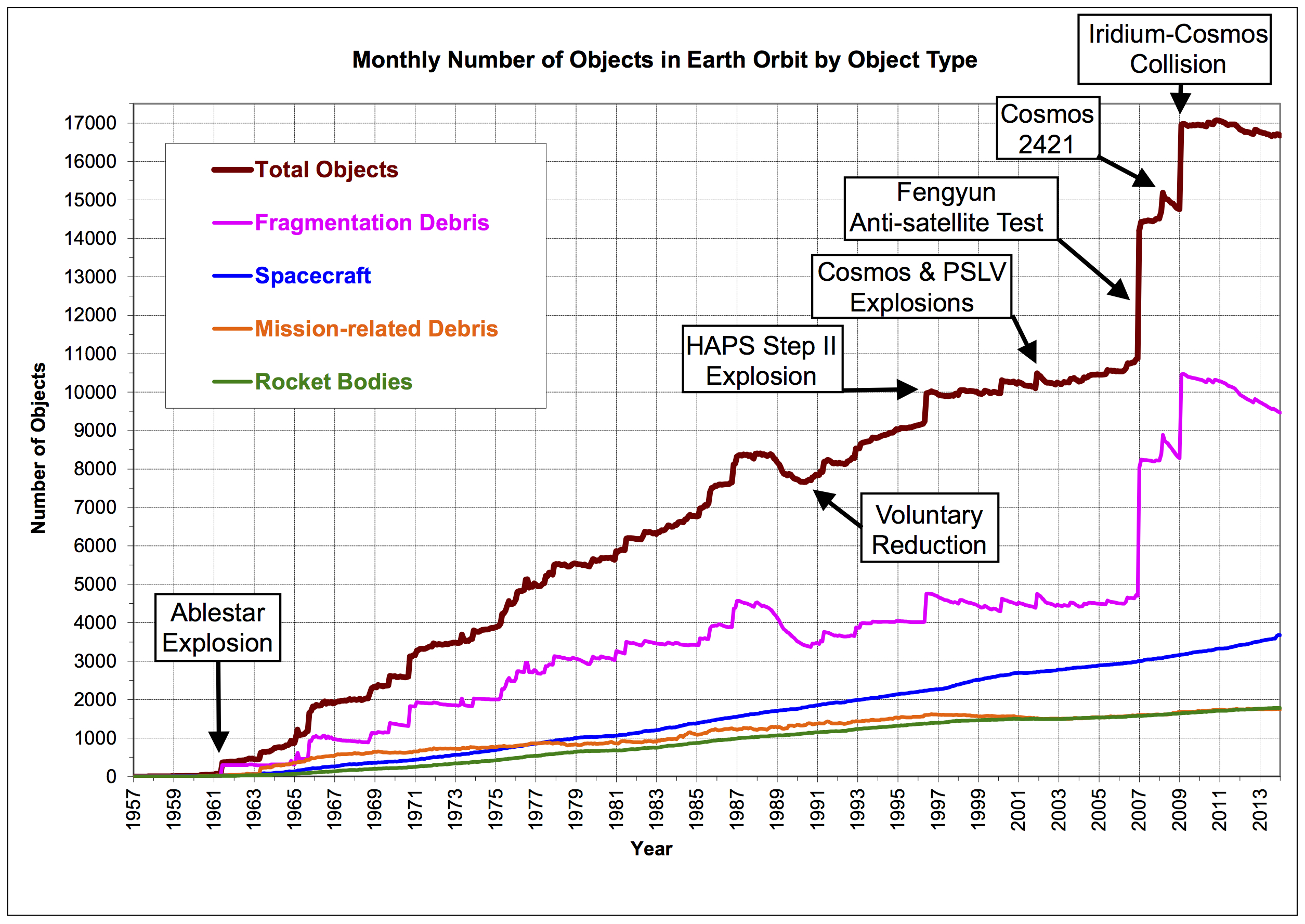You think the trash problem in your city is bad? Try outer space. We humans have been littering our cosmic backyard with spent satellites, rocket hulls, and other discarded debris fragments for as long as we’ve had the technological know-how.
And as a new, data-driven animation that takes us from the dawn of spaceflight through 2015 shows, it ain’t going anywhere.
When the Soviet Union launched Sputnik 1 — the world’s first artificial satellite — in 1957, it not only marked the beginning of the space age, but the start of a brand-new littering tradition. A discarded piece of the rocket that took Sputnik 1 to orbit became the very first space trash, and nearly every subsequent mission has added more. Junk collected slowly at first, but in June of 1961, the Ablestar launch vehicle bearing the Transit 4A satellite exploded in orbit, creating 300 fragments of trash.
Still, we were just getting started.
By 2007, the number of trackable pieces of space junk, ranging from apple-sized fragments to entire rocket engines, had topped 9000. That year, a Chinese ballistic missile test exploded, adding another 2000 to the swarm. As of 2012, more than 23,000 objects larger than 5cm in diameter were being tracked by the US Space Surveillance Network. The number of <1 cm sized objects, which include everything from stray screws to flecks of paint, has surpassed half a million. Like moths to a big blue flame, our world has become a magnet for debris.

Catalogued space debris over time. Image credit: NASA, annotated by Mika McKinnon
Aside from the fact that this sorry situation will be downright embarrassing should any alien civilizations ever decide to pay us a visit, all of this space trash is dangerous. Even a tiny fleck of junk orbiting our planet at hypersonic velocities can pack the punch of a hand grenade, ripping clean through the hull of an unsuspecting spacecraft.
Fortunately, there are now a number of fun ideas on the table for cleaning it all up, including space-grade fishing nets, trash-seeking laser telescopes, and autonomous vacuum cleaners that literally run on garbage.
The video above was created by astronomer Stuart Grey of the University College London, using data on the precise location of each piece of space junk from versions of this animation before, but every year, the mighty swarm seems to get more impressive.
Top image: YouTube screenshot from 1957. Just look how clean things were…
